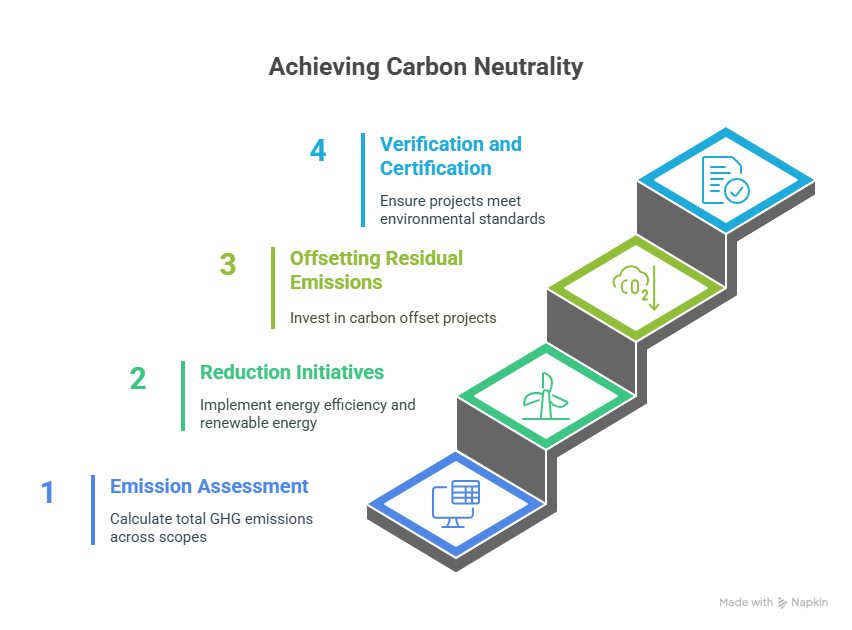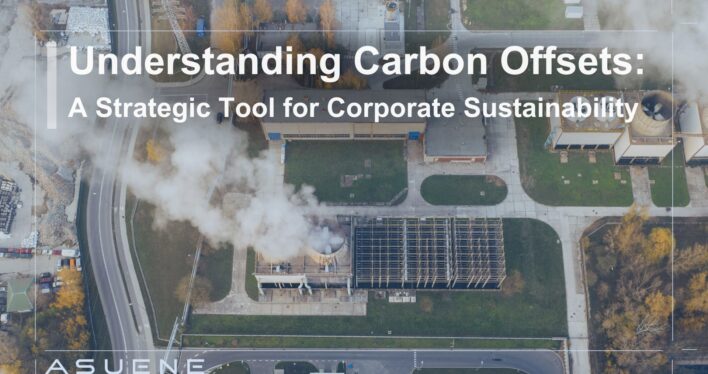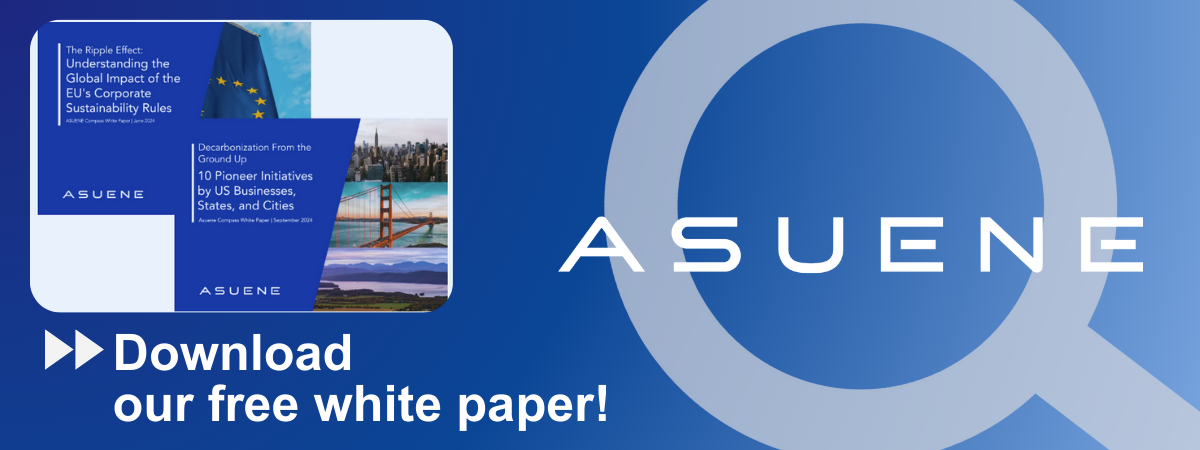- Article Summary
-
Overview
As the global community intensifies efforts to combat climate change, businesses are under increasing pressure to reduce their carbon footprints. Carbon offsetting emerges as a pivotal strategy, allowing companies to compensate for their greenhouse gas (GHG) emissions by investing in environmental projects that reduce or remove emissions elsewhere. This article delves into the mechanisms, types, and strategic benefits of carbon offsets, providing insights for companies aiming to integrate them into their sustainability frameworks.
The Mechanics of Carbon Offsetting
Carbon offsetting involves a series of steps:
- Emission Assessment: Companies begin by calculating their total GHG emissions, often categorized into Scope 1 (direct emissions), Scope 2 (indirect emissions from energy), and Scope 3 (other indirect emissions, such as supply chain activities).
- Reduction Initiatives: Prioritizing internal emission reductions through energy efficiency, renewable energy adoption, and process improvements.
- Offsetting Residual Emissions: For emissions that are challenging to eliminate, companies invest in carbon offset projects that either reduce emissions elsewhere or remove CO₂ from the atmosphere.
- Verification and Certification: Ensuring that the offset projects are validated and verified by recognized standards to guarantee their environmental integrity.

Types of Carbon Offset Projects
Carbon offset projects are diverse, catering to various environmental and social objectives:
- Renewable Energy Projects: Investments in wind, solar, or hydroelectric power generation that displace fossil fuel-based energy sources.
- Energy Efficiency Initiatives: Programs that enhance energy use efficiency in industries, buildings, or transportation.
- Forestry and Land Use Projects: Afforestation, reforestation, and forest conservation efforts that sequester CO₂.
- Methane Capture Projects: Capturing methane emissions from landfills or agricultural practices to prevent their release into the atmosphere.
- Carbon Capture and Storage (CCS): Technologies that capture CO₂ emissions from industrial processes and store them underground like Direct Air Capture (DAC), a form of climate tech.
Strategic Benefits of Carbon Offsetting for Companies
Embracing carbon offsetting can significantly enhance a company’s public image by showcasing its commitment to environmental responsibility. This proactive stance can foster customer loyalty and strengthen brand reputation. In areas where carbon regulations are in place, offsets can serve as a practical tool to meet legal requirements efficiently and economically. Companies with clear, actionable climate strategies also tend to attract more interest from sustainability-minded investors. Offering carbon-neutral products and services can further set businesses apart in competitive markets, positioning them as forward-thinking leaders. In addition, by actively managing emissions through offsets, companies can reduce potential future risks tied to emerging regulations or disruptions across their value chains.

Ensuring the Integrity of Carbon Offsets
To make carbon offsets truly effective, projects must demonstrate additionality, meaning the carbon savings wouldn’t happen without the offset funding. They also need to guarantee permanence, so the carbon stays out of the atmosphere for the long term. It’s important to avoid double counting, ensuring that each offset is only claimed once. Using independent verification from trusted third parties confirms that the offsets are real and measurable. And maintaining transparency through clear documentation and reporting helps stakeholders track each project’s impact. These practices help ensure that offsets are credible and support real progress toward climate goals.
Conclusion
Carbon offsetting serves as a valuable component of a comprehensive corporate sustainability strategy. By understanding the mechanisms, types, and benefits of carbon offsets, companies can make informed decisions that align with their environmental goals and stakeholder expectations. As the global emphasis on climate responsibility grows, integrating carbon offsets and leveraging climate tech innovations can position businesses as proactive leaders in the transition to a low-carbon economy.
Why Work with ASUENE Inc.?
Asuene is a key player in carbon accounting, offering a comprehensive platform that measures, reduces, and reports emissions, including Scope 1-3, with expertise in decarbonization. Asuene serves over 10,000 clients worldwide, providing an all-in-one solution that integrates GHG accounting, ESG supply chain management, a Carbon Credit exchange platform, and third-party verification.
ASUENE supports companies in achieving net-zero goals through advanced technology, consulting services, and an extensive network.


